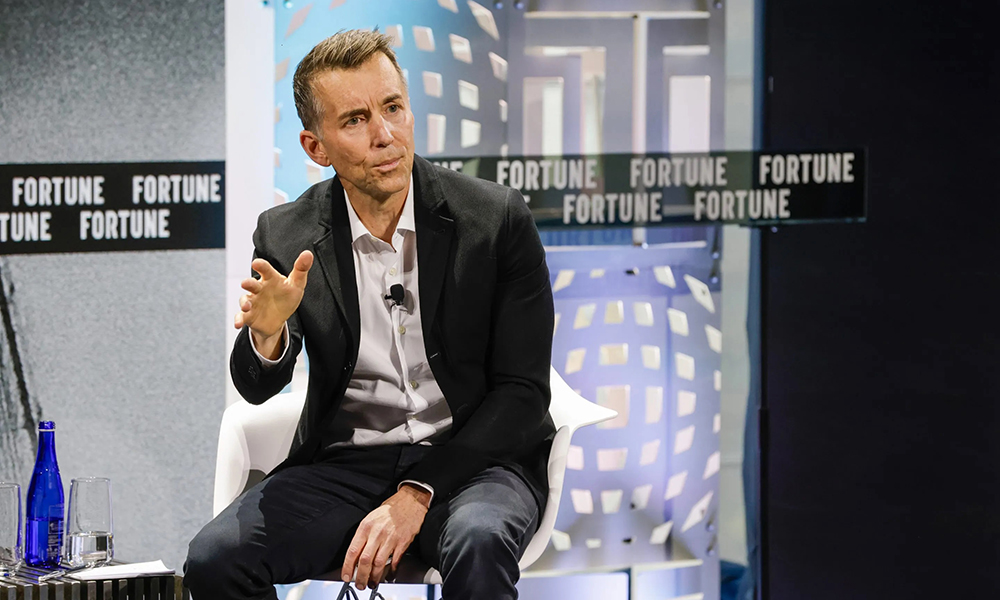
我們的世界正處于一場人工智能革命的浪潮之中,隨著技術日益成熟,我們將見證企業如何掌握并利用人工智能技術,以及如何與之共同成長。
管理軟件公司Qualtrics的首席執行官齊格·塞拉芬周一在紐約舉行的《財富》全球論壇上引用了一句經典格言。他表示:“我們往往高估短期內的變化,卻嚴重低估長期趨勢。我認為這句話在當前的情境下顯得尤為貼切。”
塞拉芬將人工智能與工業革命相提并論,原因是當時鋼鐵作為建筑材料越來越受歡迎。盡管鋼鐵早已被用于鐵路建設,但幾十年后人們才意識到它也可用于建筑。如今,它已成為我們使用的關鍵材料之一。
他表示:“我認為我們目前正處于一個與過去極為相似的階段,人們已經見證了人工智能的顯著進步,但這一進程的時間線會被大大壓縮。因此,轉型期將從5年縮短至3年。”
隨著各行各業學習如何應用這項技術,塞拉芬期望見證一個生態系統的誕生,在該系統中,公司將進行創新、微調和建立代理,從而創造一個充滿機遇的新世界,這與工業革命時期的情況頗為相似。
為了避免扼殺人工智能帶來的創新機遇,塞拉芬警告各國政府不要對這項技術進行過度監管,而是敦促他們制定旨在促進創新和建立信任的框架和指導方針。
塞拉芬說:“當你想到那些鐘愛和最親近的品牌公司時,你會感到被理解,并信任它們。政府的情形亦是如此。因此,人工智能實際上為我們提供了一個機會,讓我們能夠利用這項技術,了解如何更貼近那些希望參與不同項目的人。”(財富中文網)
譯者:中慧言-王芳
我們的世界正處于一場人工智能革命的浪潮之中,隨著技術日益成熟,我們將見證企業如何掌握并利用人工智能技術,以及如何與之共同成長。
管理軟件公司Qualtrics的首席執行官齊格·塞拉芬周一在紐約舉行的《財富》全球論壇上引用了一句經典格言。他表示:“我們往往高估短期內的變化,卻嚴重低估長期趨勢。我認為這句話在當前的情境下顯得尤為貼切。”
塞拉芬將人工智能與工業革命相提并論,原因是當時鋼鐵作為建筑材料越來越受歡迎。盡管鋼鐵早已被用于鐵路建設,但幾十年后人們才意識到它也可用于建筑。如今,它已成為我們使用的關鍵材料之一。
他表示:“我認為我們目前正處于一個與過去極為相似的階段,人們已經見證了人工智能的顯著進步,但這一進程的時間線會被大大壓縮。因此,轉型期將從5年縮短至3年。”
隨著各行各業學習如何應用這項技術,塞拉芬期望見證一個生態系統的誕生,在該系統中,公司將進行創新、微調和建立代理,從而創造一個充滿機遇的新世界,這與工業革命時期的情況頗為相似。
為了避免扼殺人工智能帶來的創新機遇,塞拉芬警告各國政府不要對這項技術進行過度監管,而是敦促他們制定旨在促進創新和建立信任的框架和指導方針。
塞拉芬說:“當你想到那些鐘愛和最親近的品牌公司時,你會感到被理解,并信任它們。政府的情形亦是如此。因此,人工智能實際上為我們提供了一個機會,讓我們能夠利用這項技術,了解如何更貼近那些希望參與不同項目的人。”(財富中文網)
譯者:中慧言-王芳
Our world is in the midst of an AI revolution—and as the technology matures, we will see how companies learn to utilize and grow with it.
Zig Serafin, CEO of management-software company Qualtrics, recounted an old saying at Fortune’s Global Forum conference in New York City on Monday. “We often end up overestimating what happens in the short run, and we end up significantly underestimating what happens in the long run. I think that is extremely true here,” he said.
Serafin drew parallels between AI and the Industrial Revolution, as steel was growing in popularity as a building material. Although it had long been used in railroads, it took many decades for people to realize that steel could be used in buildings—now one of the most vital materials used today.
“I think we are in a very similar stage at this point, where people see AI improve substantially, but the timelines would be significantly compressed. So we go from a five-year inflection point to a three-year inflection point,” he said.
As different industries learn how to use the technology, Serafin hopes to see an ecosystem where companies will innovate, fine-tune, and build agents that will create a new world of opportunities, similar to that of the Industrial Revolution.
In order to not squash the innovation opportunities that come with AI, Serafin warns governments against the over-regulation of the technology, instead urging them to create frameworks and guideposts aimed at catalyzing innovation and building trust.
“If you think about the companies of the brands that you love and the ones you’re closest to, you feel understood and you feel like you trust them. The same is true for governments,” Serafin said. “So AI actually creates an opportunity to use the technology to actually be able to understand how to get much closer to the people that are looking to participate in different programs.”






